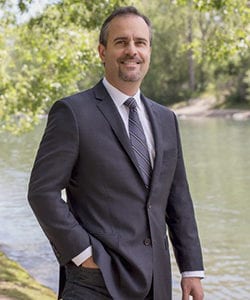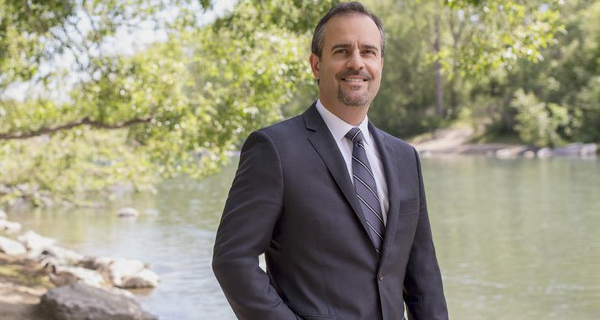Royce Chwin is president and CEO of Travel Alberta.

Royce Chwin
What has the tourism industry been like for Alberta in recent years?
Chwin: On the whole, the Alberta visitor economy has seen year-on-year growth since 2015, despite the domestic economic climate. Our most recent numbers are from 2016 and it was a record year for tourism in Alberta – worth $8.5 billion to Alberta’s economy in that year. And that was during the height of the economic downturn. So, even though revenues in other sectors declined in the same period, tourism has been a resilient economic shock absorber for Alberta.
It’s also important to note that tourism does have the strength to stand on its own – it’s not something that goes up and down with the rest of the economy. In the boom years, many assumed that tourism was successful because of the energy industry. But this recent downturn proved that isn’t entirely accurate. In communities where energy is the primary economic driver, those with tourism offerings suffered less than those without. Tourism provided a bit of a softer landing, you can say.
It’s not to say that tourism entirely absorbed the downturn, but investment in tourism does have the potential to lessen the shock to the local economy, including restaurants, hotels, retail, etc., that rely not just on local traffic but leisure and business traffic, too. In fact, when communities create the right conditions for destination development, investment and promotion, tourism can be a very strong economic lever that supports the triple bottom line of a multifaceted, sustainable economy: socially, environmentally and economically.
Another powerful fact about tourism is that it’s one of the most labour-intensive sectors in the world that continues to show growth. The UNWTO (United Nations World Tourism Organization) is forecasting five per cent increase in international arrivals, a key metric that indicates sector growth. And growth in international arrivals is important because that represents new money into our economy. Of that $8.5 billion for Alberta, $2 billion is attributed to spend from international visitors. International spend is an incredible return for Alberta; six per cent of our visitation comes from international and trans-border markets representing 25 per cent of the overall Alberta visitor economy.
The forward outlook remains generally positive. Because we get macro performance data about 15 months in arrears, we’re just starting to get a glimpse of 2017 and 2018 and both look generally positive. The Conference Board of Canada, for example, is calling for modest growth in both domestic and international overnight visitation of 2019 – two per cent for Canada and Alberta 2.1 per cent.
Are there any interesting trends you’ve seen?
Chwin: One of the most powerful trends we’ve seen is the shift in how people see and perceive Alberta as a brand, and a desirable travel destination. More so than ever, the potential traveller, or consumer, is in charge of brand sentiment now – companies really aren’t. Consumers are looking online, from wherever they are in the world, and comparing what Alberta has to offer against every other destination. And they’re reading reviews written by other travellers about what’s good, and what’s not.
So for us as destination promoters, it’s crucial that we understand that these travellers, our consumers, can be powerful advocates, dissenters or, more alarmingly, indifferent, to the Alberta brand and the reputation we’re trying to foster. Like with other sectors, this power shift can be attributed to technology: technology influences consumer behaviour, and in turn, consumer behaviour influences technology. Take Uber or Airbnb for example: consumers are using these technology platforms when they travel, and are sharing their experiences with others constantly. For marketers, this means we have to understand the shifts, and attempt to get ahead of them while trying to remain relevant and show value. That’s a trend in and of itself we and our partners stay on pulse with.
We’re also seeing interest in Indigenous tourism development and promotion. We’re excited to partner with Indigenous Tourism Alberta to help them promote our unique Indigenous experiences. Internationally, we are seeing and evolving and wide-ranging demand for truly authentic Indigenous experiences. We have a wealth of incredible history in Alberta that can be developed, nurtured and shared by our Indigenous tourism partners, so we’re pretty excited to be working on this.
Perhaps the most interesting and maybe surprising trend is the continued growth of the travel industry, internationally. International tourism has grown, year over year, since the great economic downturn of 2008 and 2009. Despite continuing economic headwinds, terrorism, trade uncertainty, pandemics and so on. In There’s a resilience coupled with fantastic entrepreneurship within this industry that’s remarkable. There isn’t a time in history where our planet has been more accessible, by more people, as a result.
What is Travel Alberta’s strategy to attract more visitors to this province?
Chwin: To win at travel promotion, we need to play the long game. First and foremost, to be able to attract more visitors we have to continue to sustainably invest in destination development and promotion – bottom line. We must create reasons to visit Alberta, all parts of Alberta, at all times of year and let people know about them.
The reality is, tourism is as competitive a sector as any other. Alberta is competing against every other destination in the world for the traveller dollar. For several destinations in the world, tourism is their biggest and most important economic driver.
It’s dangerous to assume that because we have the Rockies people will continue to visit Alberta. That’s like saying “everyone knows about Coca-Cola so people will just buy it. We don’t need to market anymore.” You could replace Coca-Cola with any number of other brands like Apple, Ford, the NHL, for example, in that statement. It’s simply not the case.
All products, experiences, etc. need marketing to increase and maintain awareness of their product and ultimately drive sales. If you don’t market your product or destination, it will get replaced in the mind of the customer with products and destinations that do market and promote (B.C., Colorado, the Alps, for example).
The competition is in the face of our potential customers every day. And that’s why it’s critical that Alberta is promoted, ongoing, to the kinds of customers who most appreciate what we have to offer.
Our strategy takes a “Team Alberta” approach to destination development and promotion. Our organization is successful if our industry is successful – if we see the destinations and experiences growing visitation, we see traveller spend numbers rising, and we see the positive impacts in communities across the province. Tourism Division, inside the Ministry of Culture and Tourism, leads on investment attraction, policy and entrepreneur investment support. Travel Alberta collaborates with our ministry partners, the Alberta tourism industry and global partners to promote the experiences we have in our beautiful province.
Together, Team Alberta creates authentic experiences that we promote to the right kinds of customers in the right markets, using the most relevant marketing channels. We strike a strategic balance between supporting our industry partners in their efforts to promote regional visitation while taking the lead in trans-border and international markets.
Where we support local tourism businesses to attract the regional market, we invest and leverage partnerships with other provinces like British Columbia and the national marketer, Destination Canada, to promote Alberta and/or Western Canada tourism experiences that will inspire international travellers to book a trip here. Travel Alberta’s platforms and networks enable our partners at all levels to reach potential customers.
And it’s working. We’ve achieved our successes because of years of sustained, strategic investments in the right markets, targeting the right kinds of travellers. Travel Alberta remains ahead of the marketing curve, and is always working to tell the Alberta story in a way that inspires visitors to explore now.
What markets do you see as potential areas of more growth in terms of visitors to Alberta?
Chwin: We’re invested in a diverse portfolio of markets. We promote Alberta experiences within the province and to Western and Eastern Canada. Internationally, the U.S. is our largest source market, but we have a strong presence in the U.K., China, Germany, Mexico, Japan, South Korea and the Netherlands also. Within these markets, China and Mexico represent the most immediate growth potential.
A key point here is that the real growth potential is outside of geographic boundaries. Digital marketing (online and on social media) means that we can find potential customers irrespective of geo-market. There’s a huge opportunity here for us to explore new ways of connecting people and sharing the Alberta destination story. And this is where we’re headed.
Is there one area of the province that you haven’t visited as a tourist that you would like to see?
Chwin: Oh boy. That’s like having to choose my favourite craft brewery or distillery! If craft beer and our distilled products are individual experiences on their own, so is Alberta.
Being in this role, I’ve had the opportunity to get out and visit a variety of wonderful places in Alberta. And each and every one is a personal, goosebump experience. I’d like to visit up north more, from Elk Island to Wood Buffalo National Park. To Cypress Hills and the Milk River regions. And then of course there’s … see what I mean?
– Mario Toneguzzi for Calgary’s Business
The views, opinions and positions expressed by columnists and contributors are the author’s alone. They do not inherently or expressly reflect the views, opinions and/or positions of our publication.



